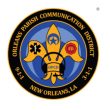A big voice in the Big Apple
What is in this article?
Broadband voice: Ready for primetime?
Most leaders in public-safety communications agree with Dowd's ultimate vision, that mission-critical broadband systems will transmit both voice and data communications to first responders. However, many question whether broadband voice will be ready to meet public safety's strict standards of reliability as quickly as Dowd is proposing.
“At some point, it will all be voice over IP,” said mobile wireless consultant Andrew Seybold. “However, having said that, you can't put cops or a SWAT team or firemen in a building where they're trying to talk to each other 30 to 50 feet away and have to have those communications go through a cell site or a tower — it doesn't work. And there's no [commercial] technology today — LTE, EV/DO, none of it — that has talkaround or simplex. That's what [Dowd is] missing.”
McEwen said he believes the peer-to-peer communications issue eventually can be resolved technically, but he questions whether manufacturers would be willing to make the necessary investment without the promise of a nationwide marketplace — economies of scale that even a city as large as New York cannot promise but that the PSST hopes to realize over time.
However, the PSST's plan is to use its broadband network solely as a data network in the near term, with various levels of voice being integrated into the offering as the technology matures. Using broadband voice for mission-critical dispatch in the short term represents “taking a big chance,” McEwen said.
“The idea that we're ready for primetime, mission-critical broadband voice, I believe, is an ill-thought-out concept,” he said. “[Dowd] is taking a giant leap from traditional, well-thought-out, land-mobile, mission-critical systems to unproven technology for mission-critical [communications].”
In terms of peer-to-peer communications, Dowd said he believes UHF portables can continue to be used for tactical purposes, negating the need to narrowband the UHF network's infrastructure until the capability is included in broadband devices. Dowd said equipment makers are telling him that broadband voice should be ready for mission-critical dispatch in the timeframe he's seeking.
“In the discussions we've had with a lot of the major manufacturers, all of them seem to feel that broadband is the place where things are going to go and that they'll have voice dispatch capability on that in three to five years, which roughly coincides with the FCC's [narrowbanding] mandate,” Dowd said.
Meanwhile, Dowd is outspoken in his belief that the FCC's D Block auction model for public-safety broadband is “flawed,” noting that commercial economic desires were allowed to trump public-safety needs in the latest proposal. Broadband data may be relatively new to public safety, but this is not the time to compromise public safety's standards for reliability and coverage.
“There have been suggestions that voice communication is more critical than data,” Dowd said. “Anyone who would suggest that to you is not in policing in this day and age.
“To suggest that a public-safety broadband system doesn't need the same coverage characteristics that the LMR voice systems currently have just flies in the face of what [police officers] do. Once you give them that tool, their expectation is going to be that it works every place their voice communications works. If it doesn't, you're going to hear it — I guarantee it. You can't have coverage that's not public-safety grade.”
At the forefront
New York City's involvement in major public-safety communications initiatives
| INITIATIVE | EFFORT | STATUS |
|---|---|---|
| Next-gen 911 | Allowing 911 centers to accept text, photo and video information from callers | Centers accept photos and video, but not through 911 system; text effort is ongoing |
| 2.5 GHz broadband | IP-based NYCWiN network built by Northrop Grumman | Network largely done; public-safety capabilities are being tested |
| Narrowbanding | NYPD operates on conventional analog UHF system | Narrowbanding deadline is Jan. 1, 2013 |
| 700 MHz broadband | NYPD wants to build own system to avoid narrowbanding cost | Seeking technical and regulatory answers |









